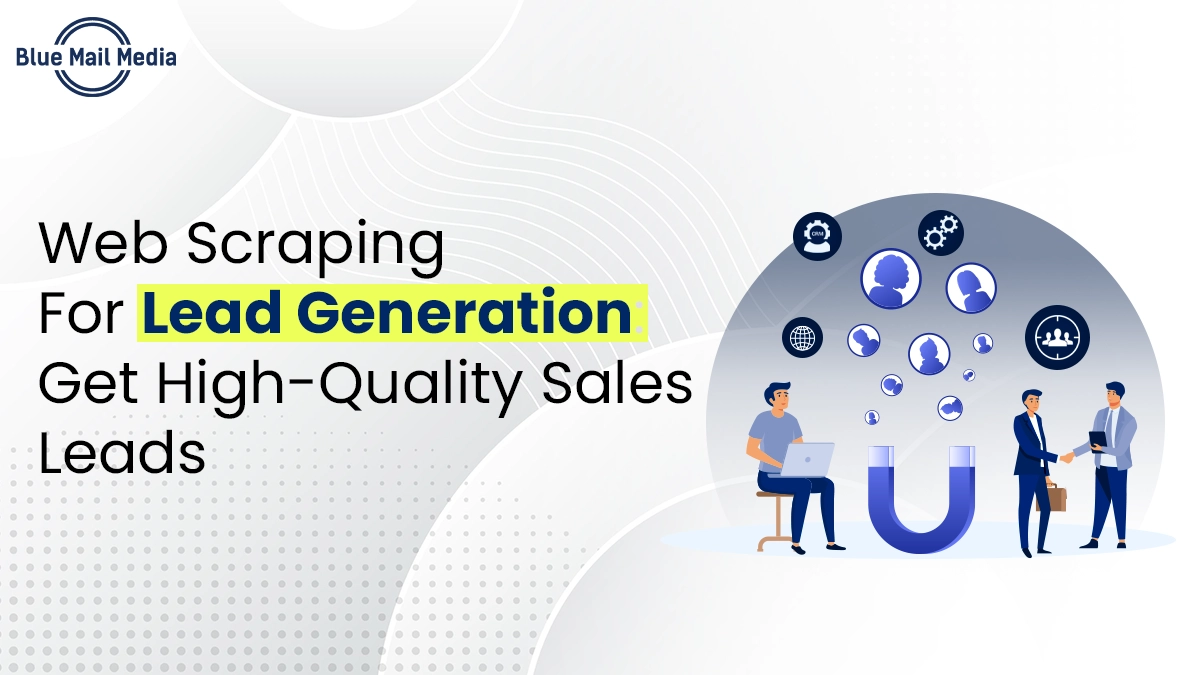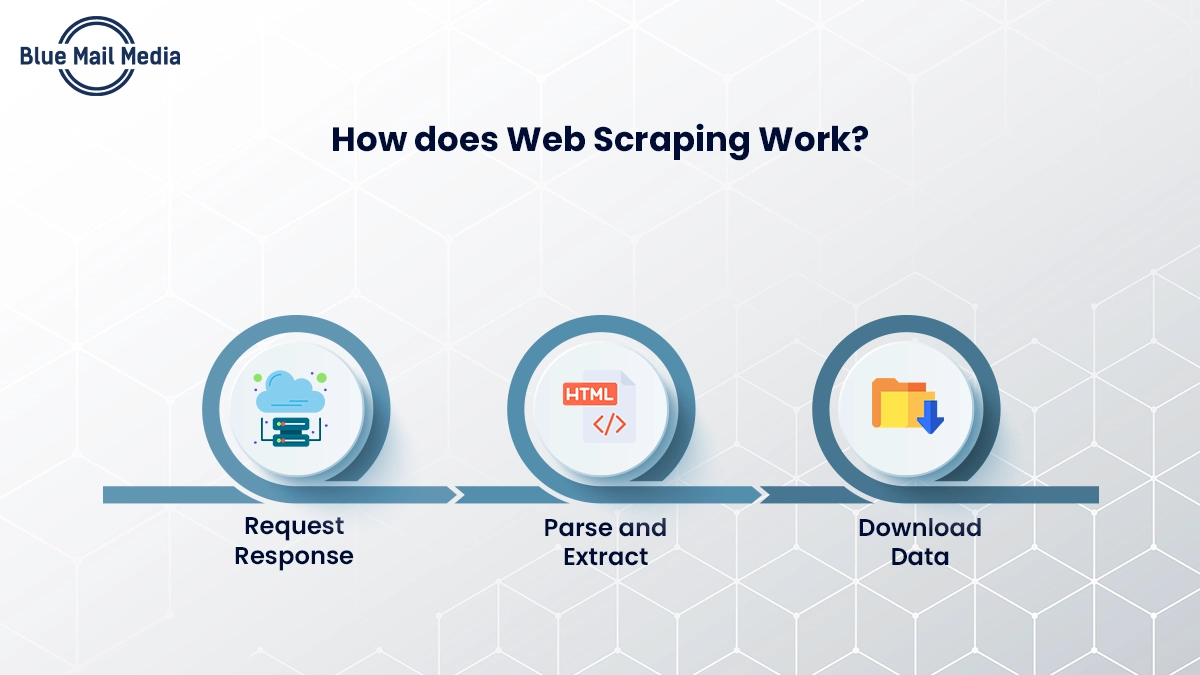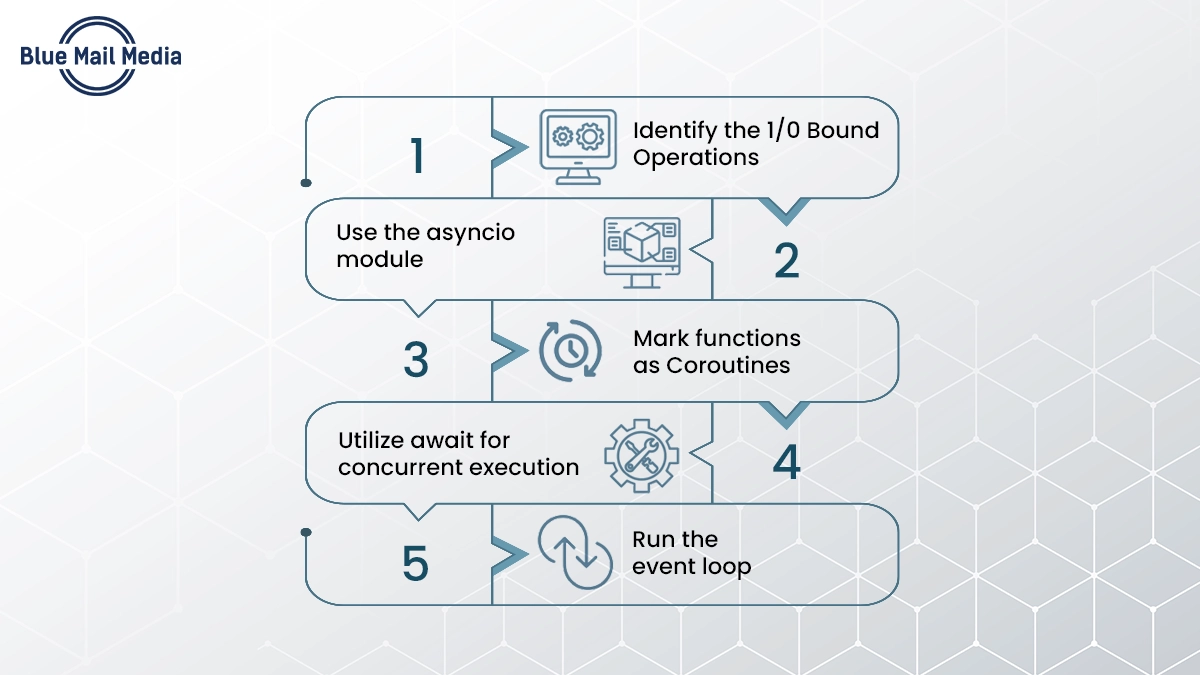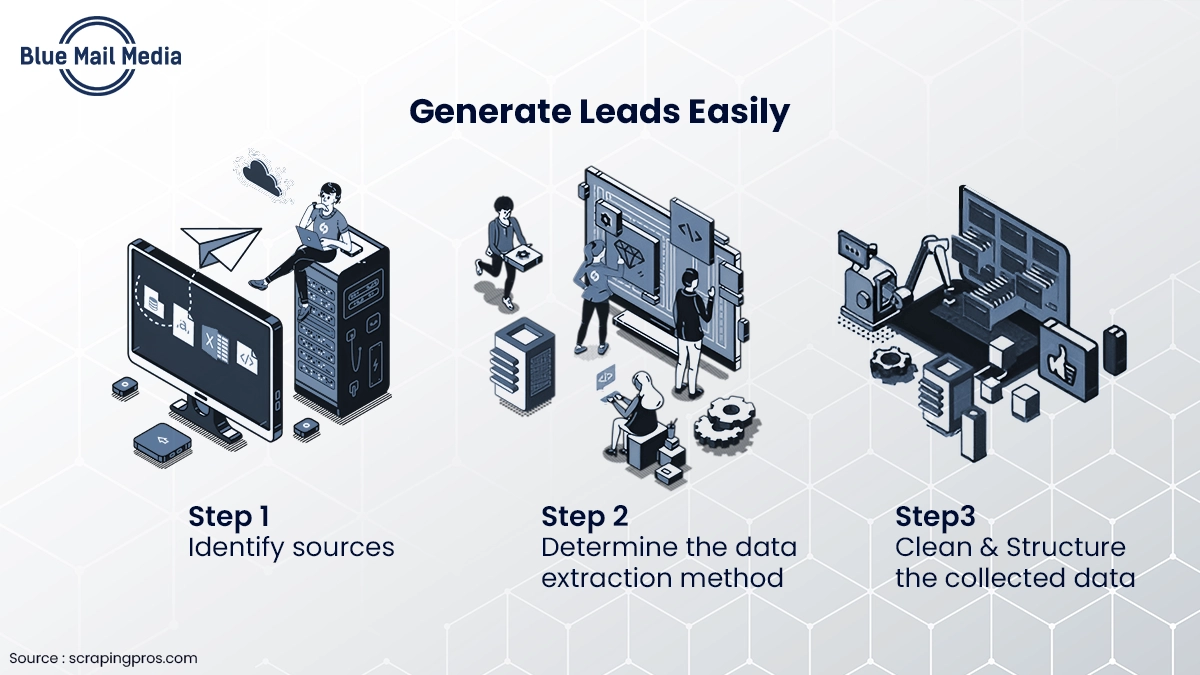Businesses can no longer rely solely on cold calling and paper media to generate new leads. In the digital age, people spend most of their time online – and this is where your leads will be active.
85% of the B2B companies consider lead generation as their priority for the marketing objectives. Ideally, they rely on various B2B lead generation tactics to attract potential clients. Web scraping has emerged as a feasible option that can assist the organization in achieving their business goals. In this blog, we will walk you through how web scraping for lead generation can streamline the development of the sales pipeline, resulting in better business growth.
What is Web Scraping?
Web scraping is a systematic process of extracting large amounts of data from any website. These datasets are acquired in the HTML format as they are unstructured in nature. They are converted into a structured format and presented in a database or a spreadsheet, or can also be integrated into your CRM.
Crawler and the Scraper are the two programs that enable professionals to perform web scraping seamlessly. Crawler is an automated program that searches through the URLs on the web page to obtain particular data. Scraper, however, is used for converting unstructured data such as databases, spreadsheets, and more into well-formatted data.
How Does a Web Scraper Work?
Every web scraper is developed to perform a specific task based on the demand from the organization. We will be learning about the operating style of a web scraper:
-
First Step: Request-Response
First, the scraper requests the target website for the contents of a specific URL. Responding to the request, the scraper receives the details in HTML format.
-
Second Step: Parse and Extract
The HTML parser takes the code and extracts relevant information like the page title, paragraphs, headings, links, bold text, etc.
-
Third Step: Download Data
In the final step, it downloads and saves the data in a CSV, JSON, or Excel format. These file formats are easily retrievable. You either use the database manually or integrate it into the CRM.
What Are the Top Data Extraction Tools Used for Web Scraping?
Web scrapers are also called data extraction tools. Some of the most popular web scraping tools are:
- Smartproxy
- Scraper API
- ParseHub
- Bright Data
- Dexi.io
- Import.io
- Webhose.io
- Grepsr
- Scrapinghub
Web Scraping Vs. Traditional Lead Generation Methods:
Web scraping for lead generation provides an arsenal for your sales team to create quality leads. With data of leads interested in your offering, you can connect and establish meaningful B2B relationships. It is better than traditional data collection methods, saving time and effort.
Let’s look at these two lead generation methods side-by-side and find the most appropriate option.
Web-Scraping for Lead Generation & its Benefits
- Automates data collection: Web scraping facilitates automated data collection from multiple sources, saving time, resources, and effort.
- Latest and updated data: Web scrapers crawl the websites directly, allowing for gathering real-time and most recent information. It is helpful for businesses dealing with dynamic processes that need real-time details.
- Better scalability: The extractors gather vast data volumes from multiple websites, ideal for research purposes or market analysis.
Traditional Methods for Lead Generation
- Take more time: Traditional methods are manual process-based and take time, especially when collecting data for bigger operations.
- Handles lesser volume: It is nearly impossible to collect massive data sets via various sources without extensive labor and resource wastage.
- Limited scalability: Conventional methods fail to deliver results while dealing with bigger data sets and updates.
Businesses That Can Implement Web Scraping For Lead Generation:
Many companies across various Industries can deploy web scraping into their lead generation process to achieve their sales goals. Corporations that can use web scraping for lead generation are –
B2B Business
B2B businesses often use LinkedIn, Google My Business, Yelp, etc., for B2B lead generation. Instead, they can use web scrapers to skim through these websites.
Healthcare
The healthcare industry produces 50 petabytes of data every year. Hospitals or other healthcare institutions can use this data for drug pricing, access insurance databases, etc.
Tech Companies
SaaS companies can collect data on businesses interested in their products and services. They can use this information to analyze their competitors’ products’ reviews. Consequently, they can identify unhappy customers and pitch their products with targeted messages highlighting USPs.
Finance Sectors
The finance sector runs on numbers and data. Manual processes to collect relevant details do not make it easy. Web data extractors help find people who are willing to invest. The financial institutes can also use it for asset management and supporting organizations to gather data and assess basic patterns.
Best Practices To Perform in Web Scraping for Better Lead Generation
Some of the best practices that businesses can implement while web scraping are:
- Software developers must be familiar with the existing norms & regulations for getting an authorized clearance for amassing personal data.
- It is suggested that essential information is obtained to prevent the gathering of redundant user data, which exposes the vulnerability to data breaches and assures conformance to the business.
- Web scraping professionals are condemned to accessing unauthorized user data sets unless it is essential while maintaining the disclosure.
- Draw out the user’s personally identifiable data sets while respecting their confidentiality & flexibility to the users to withdraw from any given point.
- Software developers must be prepared to void for securing the obtained datasets from any unauthorized approach or alterations.
Data Protection Regulations in Web Scraping
Implementing data scraping can be difficult and increase risks if not done right. To avoid any mishaps, be sure to collect data efficiently and reliably. You do not want to be on the wrong side. Here are some ways to ensure that:
The General Data Protection Regulation (GDPR) is an EU law that regulates how companies and organizations handle and manage personal data. Meanwhile, the US has segmented regulatory institutions in place, such as:
- Health Insurance Portability and Accountability Act (HIPAA) for healthcare
- California Consumer Privacy Act (CCPA)
- The Gramm-Leach-Bliley Act (GLBA) for finance
Data Compliance Protocols That Should Be Used in Web Scraping
The core elements of web scrapping are to ensure the reliability of the datasets based on the quality and supervision to ensure minimum breach of data activity:
- Invest in high-tech biometrics for monitoring any fraudulent activity in the organization.
- Always prefer to use a reliable and specific file format by considering the presented data structure from the management.
- Avoid physical or digital clutter by setting up a system that detects and reduces redundant datasets.
- Organize the information using metadata, which are easy-to-identify markers of content.
- Clean and standardize the data before analyzing it. This might involve deleting unnecessary information like special characters or reformatting text.
Future-Proofing Your Lead Generation with Web Scraping
The prevalence of artificial intelligence (AI) algorithms has increased, given how sophisticated they’ve become over time. Consequently, the functionalities of tools like web scrapers are bound to enhance with AI.
The latest versions of web scrapers have already eliminated the need for CSS Selectors or XPathes to direct where to acquire the data. AI analyzes any HTML page’s structure and extracts the data according to your requirements. For instance, Outscraper’s Universal AI-powered Web Scraper can scrape data from any webpage without any code required.
Wondering what web scraping for lead generation holds for businesses?
Undoubtedly, web scraping can help you get ahead of the curve with its real-time data extraction capabilities. You can use these tools for competitor websites, track pricing changes, and analyze customer reviews.
Web scraping tools also help identify emerging trends and fine-tune strategies. Web scraping provides the ultimate business edge for the corporation over its competitors by delivering accurate business insights and user approaches and assisting the stakeholders in intellectual decision-making.
Case study
Let’s look at one case study from xbyte.io.
About The Client
A Financial organization was urged to develop a feature to monitor real-time financial data feeds.
The Challenge
The organization wanted to use social and market data to develop a financial endorsement engine for delivering accurate indicators for systematic equity investments. The organization wanted to extract data related to the finance industry across various mediums to condition the intelligence with the consumer pattern. Scaling of the large datasets of the website was a concern, and its coverage was essential to perform with minimal hassle in the financial sector.
The Solution
The X-byte’s DaaS platform scraped larger data sources that fluctuated with low latency modules, adaptive crawling, and real-time oriented alerts. With the help of active APIs and scalable data indexing, it delivered the results directly in JSON in real-time.
The Results
X bytes obligated the financial corporation with 100% APIs displaying real-time data feeds. The infrastructure development lowered the business cost investments that were made earlier and streamlined the business operations.
Wrapping Up
The traditional method that was incorporated demands manual power and financial funds to operate but, to a certain extent, did not ensure attracting high-yielding prospects for lead generation.
Web scraping, on the other hand, has the potential to deliver pinpoint accurate information that can be extracted from the existing websites and amalgamated into your CRM software. This can structure the complexity of the extracted data for better handling purposes.
The existing APIs of web scraping hand over the reliable dataset of the users, which, in turn, is the software developers’ responsibility to adhere to the website’s legal guidelines and conformity.




